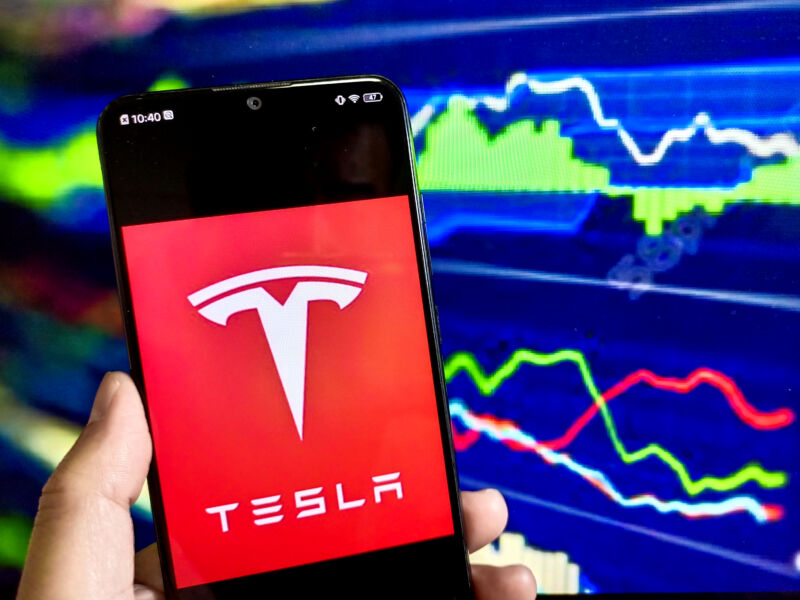
CFOTO/Future Publishing via Getty Images
Tesla had a terrible first quarter of 2024, according to its financial results posted yesterday. We already knew that it was a bad three months in terms of delivering cars—the automaker built tens of thousands of cars it couldn’t sell as deliveries dropped by 8.5 percent year over year. If anything, the quarterly results paint an even worse picture.
The company has been engaged in a series of heavy price cuts, and that’s showing up on the balance sheet. For all of Tesla CEO Elon Musk’s statements about artificial intelligence being the future of the company, the vast majority of its income is still derived from automotive sales. These amounted to $16.5 billion in Q1, nearly $2.5 billion less than for Q1 2023. (Regulatory credits remain pretty steady at $442 million for the quarter.)
Total revenues were down by 9 percent year over year, with gross profits down 18 percent. But the net profit, once generally accepted accounting measures were applied, fell by 55 percent to $1.1 billion. (Non-GAAP net profit was down 48 percent.)
Tesla’s net cash dropped by 90 percent during the first three months of this year, and its free cash flow has been wiped out, dropping 674 percent year over year. Meanwhile, its supply of inventory—cars it has built but hasn’t sold—grew from 15 days to 28 days, accounting for a third of the cars it built during the three-month period.
Perhaps most alarmingly for those who claimed Tesla was different from other automakers has been the decline in the company’s once-envied profit margin. This has been on a steady slide as the company’s price war took hold, but for Q1 2024, it stands at just 5.5 percent, almost half the industry average.
In fact, the true picture may be slightly worse. When customers pay Tesla for its FSD driving option, it has deferred that revenue. But as it adds more features to FSD—most recently automated parking—it has been recognizing that revenue, almost all of which is profit. For Q1, the automaker says it recognized $281 million of deferred revenue, and it expects to recognize an additional $848 million during the remainder of 2024.
Tesla fans hoping to hear good news about a $25,000 Model 2 went home disappointed. While Tesla refers to “more affordable models” in its outlook, questions about a cheaper Tesla received short-shrift from the CEO, who rebuffed inquiries by saying, “I think we’ve said all we will on that front.”
Rather, the company plans to continue cutting costs from its existing Model 3 and Model Y. Tesla “will use aspects of the next-generation platform as well as aspects of our current platforms, and will be able to be produced on the same manufacturing lines as our current vehicle lineup,” Musk claimed.
There is still no clear timeline on when replacements for these models might appear, although Tesla has just returned the Model 3 Performance to sale. Instead of developing new models, Musk continues to maintain that Tesla’s future is in AI. It spent $1 billion on GPUs in Q1—almost as much as it spent on total R&D during the same time.
